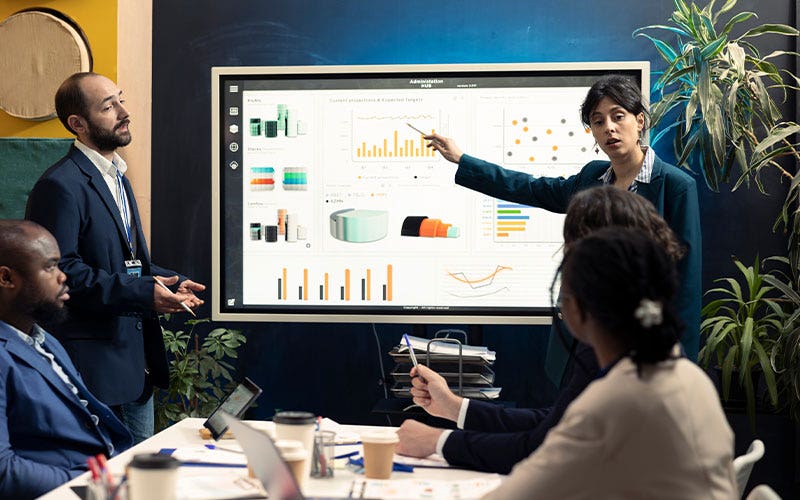What are special education schools?

According to data from the England and Wales Children’s Commissioner, there are almost 1.5 million children of all ages in the school system who have special educational needs or disabilities (SEND, also referred to as SEN).
Of all school-age pupils, around 12.6% receive some form of SEN support, with a further 4% having an Education, Health and Care Plan (EHCP or EHC plan), an Individual Education Plan (IEP) or a Statement of SEN. While many of these children will attend mainstream schools – where the curriculum and support they receive may be adjusted to support their specific needs – others will attend special education schools. While the types of school vary, all providers must abide by the SEND Code of Practice which details their duties and responsibilities in relation to children with SEN.
SEN is broadly divided into four main categories:
-
communication and interaction, such as Autism Spectrum Disorder (ASD), speech difficulties or other communication difficulties
-
cognition and learning, such as dyslexia, dyscalculia, dyspraxia or dysgraphia
-
physical and/or sensory, such as ASD, hearing impairment (HI), visual impairment (VI), multi-sensory impairment (MSI) or physical needs and disabilities
-
social, emotional and mental health, such as ASD or attention deficit hyperactivity disorder (ADHD).
These needs and difficulties will differ in both severity and how much they interfere with learning. Making decisions regarding a child’s schooling and support is a big responsibility for parents and carers; it’s likely even more so if a child has a learning disability, physical disability, or other additional needs.
What are special education schools?
Special education schools, also referred to as special schools, provide education and support to children and young people with an EHCP. These children generally have complex needs that require special educational provision relating to their care, support and learning, delivered in a specialist setting.
With specialist facilities, staff members with specific knowledge of supporting various SEN, adapted curriculums and close contact with health services, therapists, care providers and other SEN professionals, these schools exist to support children who, for various reasons, would benefit from non-mainstream education. Some special schools cater for a wide range of SEN, while others focus on a specific area.
Choosing an appropriate special school for a child will depend on their age, the school’s location, and the SEN or specialist provision required by their EHC plan. Parents and carers in England and Wales can contact their local authority, who can compile lists of suitable special schools or make recommendations and referrals based on a child’s needs and requirements. This forms part of the local offer, which is the requirement to provide SEND children – from early years through to 25 – and their families with the help, support and information they require.
What are the benefits of special education schools?
Ensuring a child’s education offers the right type of support can have a hugely positive impact on their lifelong learning, development and wellbeing.
Special education schools do not offer a one-size-fits-all approach. They acutely tailor the education and support to the children and young people under their care on a highly individual basis.
While a special school may not be the right choice for every child in need of additional support, they can offer a wide range of benefits:
-
smaller class sizes mean children receive greater support; in some cases, ratios of pupils to adults can exceed one-to-one help, meaning that staff members get to know children on a highly individual level
-
adjusted curriculums, as opposed to the mainstream national curriculum, cater for individual needs and are closely and carefully aligned to a child’s personal targets and goals
-
a greater range of interventions and specialists are integrated into learning, with teachers, teaching assistants and other professionals collaborating to support each child with their holistic development. For example, speech and language therapists, physiotherapists, school nurses, Makaton-trained staff members, therapists and other mental health specialists
-
teaching and assessment methods are closely aligned with individual learning needs, styles and strengths
-
teaching and support staff generally possess specialist, in-depth understanding of additional needs and how best to support them in-school, as well as helping families to support them at home
-
children will be part of a peer group with similar needs; as well as enhancing their social development and making it easier to interact and form friendships, this can help children to feel included
-
close monitoring of progress and development
-
specialist facilities that cater to diverse physical and learning difficulties
-
strong links are cultivated between the school and parents and carers.
Special schools work hard to provide long-term, life-changing benefits to children and young people. Developing their independence in school can mean that less intervention and care is required later in life. As a result, there is often reduced reliance on specialist support services and social care. Special education can also boost confidence, self-esteem and wellbeing, and support future job and career success.
What is a special education classroom like?
SEN classrooms have diverse considerations. Headteachers, special educational needs coordinators (SENCOs), teachers and other staff members must create stimulating, engaging and accommodating environments that cater to the day-to-day demands of their pupils – regardless of the challenges they face.
Special school facilities vary widely, but commonly include features such as:
-
enhanced accessibility, especially if learning spaces need to be multi-use and flexible. Children and young people may use walking aids, wheelchairs and other equipment, and spaces need to facilitate participation in activities of all types. Facilities may include wheelchair ramps, low-level thresholds, handrails, appropriate door handles and low-level storage
-
sensory elements, such as sensory rooms, which help to develop and engage children’s sensory exploration as well as their interaction and self-regulation. Features can include lighting, acoustics, textures, objects and aromas, for example sensory dens and ‘calm zones’ containing fibre-optic strands, infinity mirrors, bubble tubes and weighted blankets
-
adapted play equipment, both indoors and outdoors, so children and young people can access the same learning and play experiences
-
specialist resources, from toys and books to games and other learning aids. Some special schools may have swimming pools to support children’s physical and mental wellbeing.
Champion special and inclusive practice in your role
Are you passionate about ensuring children receive the extra help and support they need?
Deepen your understanding of inclusive education, and take the next step in your educational career, with Queen Margaret University’s online MA Special and Inclusive Education course.
Whether you’re an aspiring SENCO, want to work in SEN settings, or simply wish to implement inclusive practices to enhance your teaching, our flexible course offers the skills and knowledge needed to succeed. Your studies will span the breadth of special education, encompassing the inclusive curriculum, digital literacies, intercultural settings, structural educational inequalities, and much more.











The information below is required for social login
Login to your Account
JOIN FOR FREE
Let’s begin with setting up your account to keep track of your progress